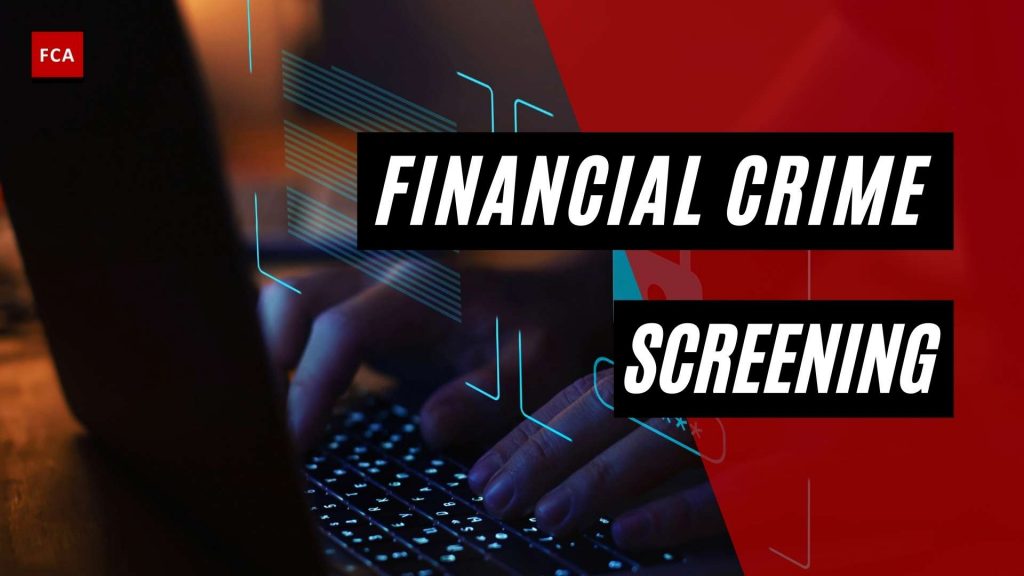Financial crime has the broadest definition, encompassing not just unlawful behaviors that disrupt the financial system but also activities that exploit tax and regulatory structures to achieve negative outcomes. Financial sector abuse occurs when a financial crime includes financial institutions. This article elaborates on ‘Financial Crime Screening’.
While there appears to be widespread agreement on the definitions of terms like money laundering, corruption, and tax evasion, the phrases financial abuse and financial crime are significantly less exact and are frequently used interchangeably. Definitions are supplied below to ensure clarity, including the operational consequences for the Fund and the Bank.
What is Financial Crime?
Any non-violent crime that causes financial or reputational harm is referred to as a financial crime. It encompasses a wide range of illicit and criminal behaviors, including money laundering and tax evasion.
Factors Contributing to Financial Crime include poor AML/KYC and financial crime regulatory and supervisory frameworks, harmful tax practices.
Types of financial crimes include money laundering, financial fraud (for example, credit card, or insurance fraud), tax avoidance and tax evasion, circumvention of exchange restrictions, sale of fictitious financial instruments or insurance policies, embezzlement of non-financial institutions, stock manipulation.

Ways of Financial Crime
Financial institutions may be involved in financial crime in different ways, such as the victim, the perpetrator, or as an instrumentality.
Firstly, financial institutions may be subject to different types of fraud. For example, misrepresentation of financial information, embezzlement of funds, credit card fraud, insurance fraud, and so on.
Secondly, the financial institutions may commit different types of fraud on others, for example, the sale of fraudulent financial products and misappropriation of client funds.
Thirdly, financial institutions may be used to keep or transfer the funds, either wittingly or unwittingly, that are themselves the profits or proceeds of a crime, such as money laundering. Financial institutions may be used to keep or transfer the proceeds of a crime. The underlying, or predicate, crime is itself often a financial crime.
Money laundering through the financial system
There is a growing perception that the most rapidly growing category of predicate crimes is financial. However, illegal drug trafficking remains a major crime. Although the circumstances vary from country to country.
Other financial crimes can be associated with, or exist in parallel with, money laundering, for example, corruption, fraud, or the control of a financial institution by organized crime. Upon the receipt of criminal proceeds, criminals may seek to launder them through the financial system.
The costs associated with financial crime, including the damage caused by abuse of poor regulatory requirements, may contribute to financial losses and crises.
Regulatory authorities’ attempt to uncover illegal activities
Financial markets’ supervisors are involved in both directions and indirect efforts to combat financial crime. Regulatory authorities in different countries exchange information about individual banks, insurance companies, or agents in the securities markets, intending to uncover unsound and illegal activities such as securities fraud, insider trading, or misreporting. Supervision is also exercised over the internal mechanisms to control risks, particularly operational risks, which also contributes to countering fraud and other forms of financial crime.
Financial crime screening is used to identify the activities and transactions involving targeted individuals, organizations, or related criminals. Crime screening is designed to identify the targeted individuals or entities before and after the onboarding process. Together, transaction and customer screening, financial crime screening is designed to form a robust set of compliance and internal controls for identifying the sanction targets. It is recognized that there are some limitations to these controls and must always be employed as part of a wider AML/KYC and Financial Crime program.

Risk assessment and identification
As with the management of all financial crime risks, an organization first identifies and assesses the risks to which it is exposed and implements a sanctions screening program commensurate with its nature, size, and complexity. In doing so, consideration needs to be given to:
- The jurisdictions where the organization is located, and its proximity geographically, culturally, and historically, to sanctioned countries;
- What customers the organization has international or domestic, where those customers are located and what business they undertake;
- The volume of transactions and distribution channels;
- What products and services the organization offers and whether those products represent a heightened sanctions risk, for example, cross-border transactions, foreign correspondent accounts, trade-related products, or payable-through accounts.
Sanction screening
The generation of an alert as a result of the process of screening is not, by itself, an indication of sanctions risk. It is the first step towards detecting a risk of sanctions exposure, which can be confirmed or discounted with additional information to evaluate whether the similarities in the text reveal a true sanctions match. The financial crime screening process can never detect every possible sanction risk to which the organization is faced due to the wide range of applicable variables and conditions in which a sanction screening is to be performed.
Sanctions screening is dependent on a range of different applicable variables and factors, including the type, availability, completeness, and quality of data points and information, as well as the inherent sanctions risks to which an organization, its products, customers, channels, and services are exposed. Consequently, the effectiveness of the financial crime screening as KYC compliance controls varies between the organizations, even where they use the same sanction screening solutions. Financial crime screening, therefore, requires a programmatic approach that must be assessed considering the ML/TF and sanction risks.
Final Thoughts
Financial crime is a vague word and defines a lot of things, bordering not just unlawful behaviors that disrupt the financial system but also activities that exploit tax and regulatory structures to achieve negative outcomes. This article elaborates on ‘Financial Crime Screening’.









